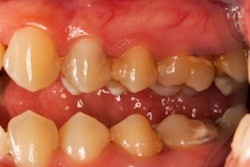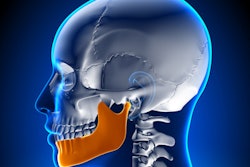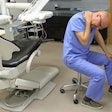
Midlife changes to a woman’s jawbone may indicate impending height loss as she ages, according to a study published in BMJ Open.
Monitoring and noting changes in the jawbone could help dentists and primary care physicians offer their aging patients preventive care, wrote a team led by Nivetha Natarajan Gavriilidou, PhD, of the Karolinska Institute in Stockholm.
“[Changes to the jawbone may] serve as proxy indicators when screening in the early phases of bone degenerative pathogenesis, signaling … the need for further clinical attention to older women at risk of height loss,” the researchers explained (BMJ Open, July 4, 2023, Vol. 13:7, e066844).
Women tend to lose height after the age of 75; this phenomenon is associated with an increased risk of ill health, the team noted. Gavriilidou and colleagues sought to investigate whether the jawbone might offer information about the general condition of the skeleton and thus predict future height loss.
"The structural bone changes seen in the jawbones … likely resemble those of the vertebrae which would, in turn, explain the potential height reduction," the group wrote.
The investigators assessed the bone health (i.e., mineral density) of 933 women by measuring cortical erosion and trabecular sparseness and explored links between these data points and possible height loss in middle-aged women. They used data from the Prospective Population Study of Women in Gothenburg, a study that began in 1968 and included women who were age 38, 46, 50, 54, or 60 at the time. The women had health and dental checkups at least twice during the study’s time frame.
Gothenburg study researchers calculated the women's height loss over three periods: 1968 to 1980, 1980 to 1992, and 1992 to 2005. From the data, Natarajan and colleagues reported the following findings:
- The average annual height loss was 0.075 cm, 0.08 cm, and 0.18 cm over the three time periods.
- Over all three periods, total height loss amounted to 0.9 cm, 1 cm, and 2.4 cm.
- Severe cortical erosion increased 3% between 1968 and 1980, over 11% between 1980 to 1992, and approximately 50% between 1992 and 2005.
- Sparse trabeculation increased 20% between 1968 and 1980, 33.5% between 1980 to 1992, and up to nearly 42% between 1992 and 2005.
"Cortical erosion in 1968, 1980, and 1992 significantly predicted height loss 12 years later," Natarajan's team reported. "Similarly, sparse trabeculation at all three time points also predicted significant bone shrinkage over the next 12 or 13 years."
The findings underscore the importance of dentists collaborating with patients' doctors when they identify cortical erosion and trabecular sparseness on dental x-rays.
"Since most individuals visit their dentist at least every two years and radiographs are taken, a collaboration between dentists and physicians may open opportunities for predicting future risk of height loss," they concluded.



















